
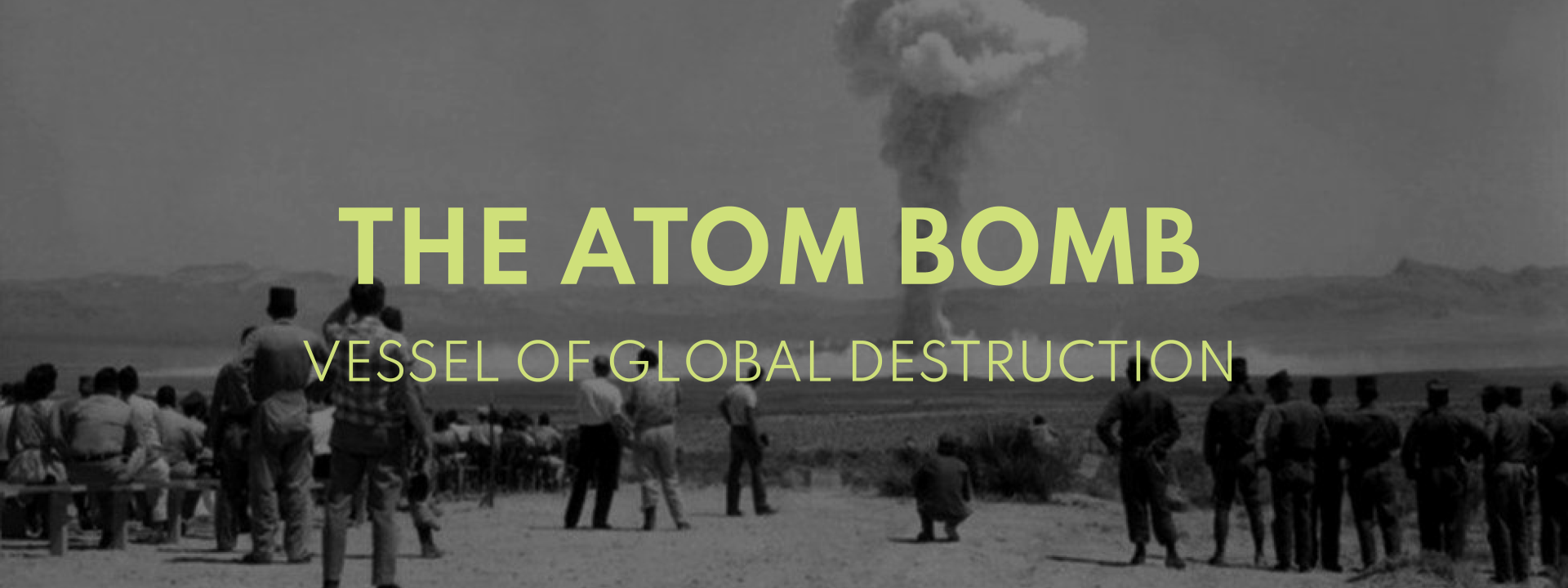
THE MANHATTAN PROJECT
Following the discovery of nuclear fission in 1938, a frantic race to weaponize this phenomenon set off between the violently warring nations of World War II. The Manhattan Project, led by J. Robert Oppenheimer, emerged as America's leading force to develop the first atomic bomb.
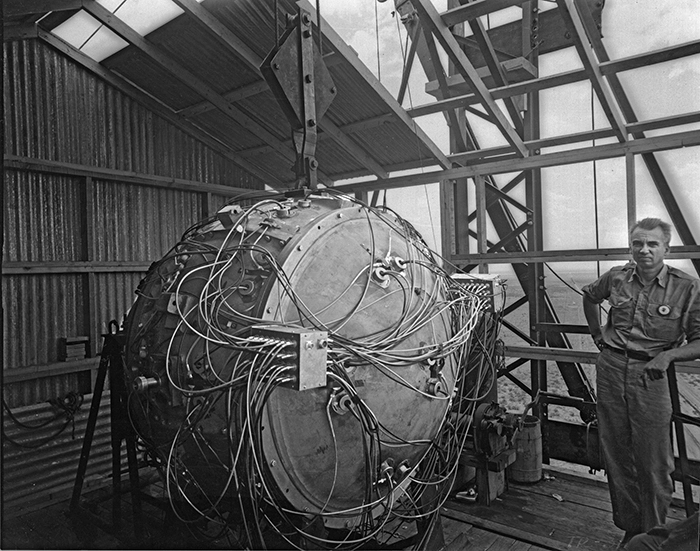
ASSEMBLED TEST BOMB, "THE GADGET," JULY 1945. COURESTY OF LOS ALAMOS NATIONAL LABORATORY
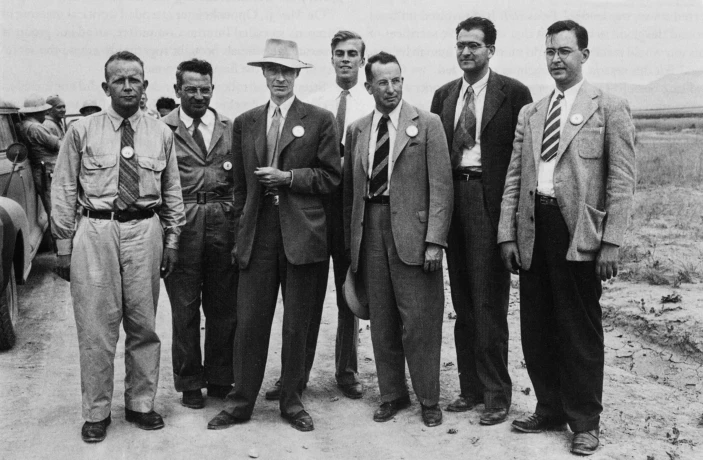
MANHATTAN PROJECT PHYSICISTS AT LOS ALAMOS, 1945. COURTESY OF SCIENCE PHOTO LIBRARY
On July 16, 1945, The US's first nuclear test, the Trinity test, yielded devastation on a scale unmatched in the history of mankind, signifiying the Manhattan Project’s successful conquest of creating a weapon capable of generating unfathomable destruction.

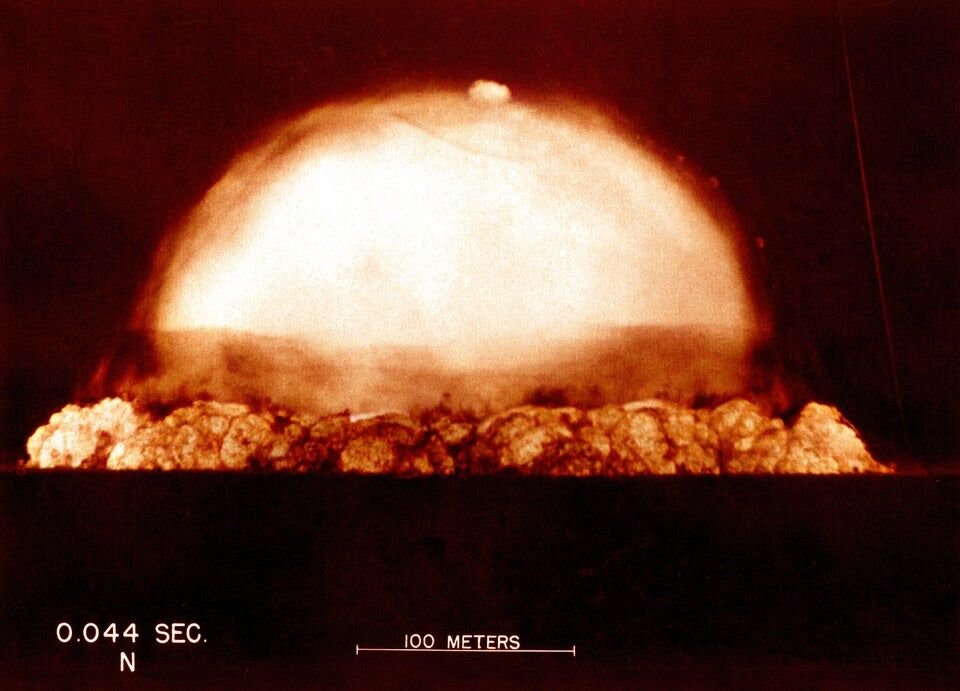
MOMENTS AFTER THE FIRST TEST BOMBING OF "THE GADGET," JULY 16, 1945. COURTESY OF LOS ALAMOS NATIONAL LABORATORY
OPPENHEIMER'S REACTION AFTER WITNESSING THE TRINITY TEST, JULY 1945. COURTESY OF LOS ALAMOS NATIONAL LABORATORY


ANNIHILATION
On August 6th, 1945, at 8:15 a.m, the US unleashed its first attack on Japan; the Enola Gay dropped the first atomic bomb on Hiroshima, Japan. 70,000 were incinerated immediately, and 30,000 more would die within hours.
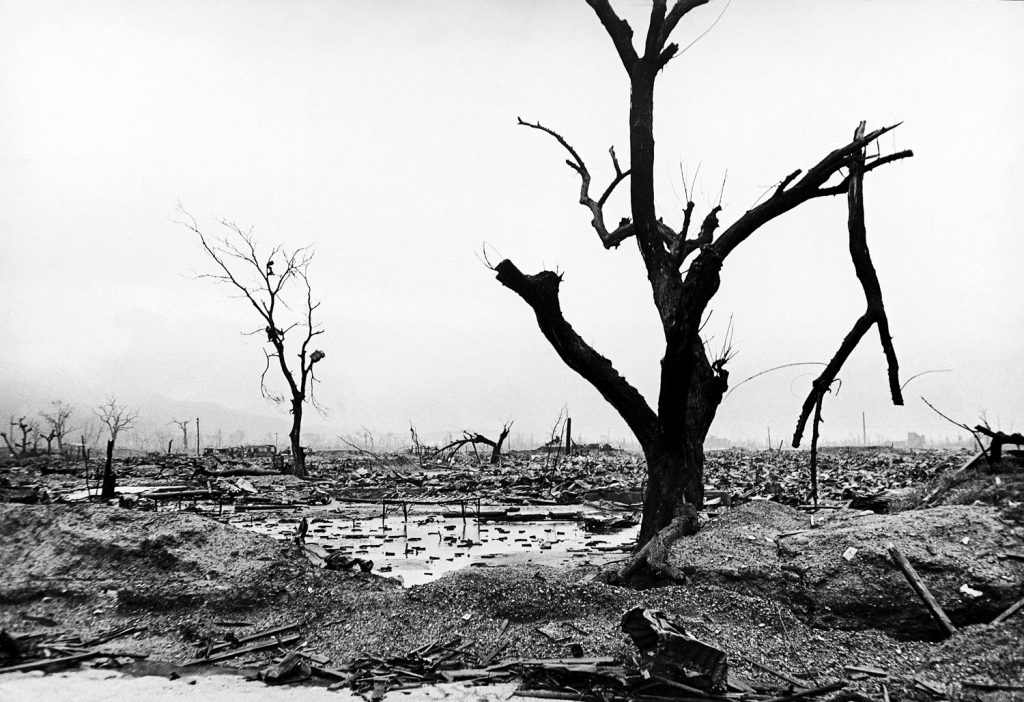
DESOLATE NEIGHBORHOOD REDUCED TO RUINS AFTER AUGUST 6TH BOMBING, 1945. COURTESY OF LIFE MAGAZINE
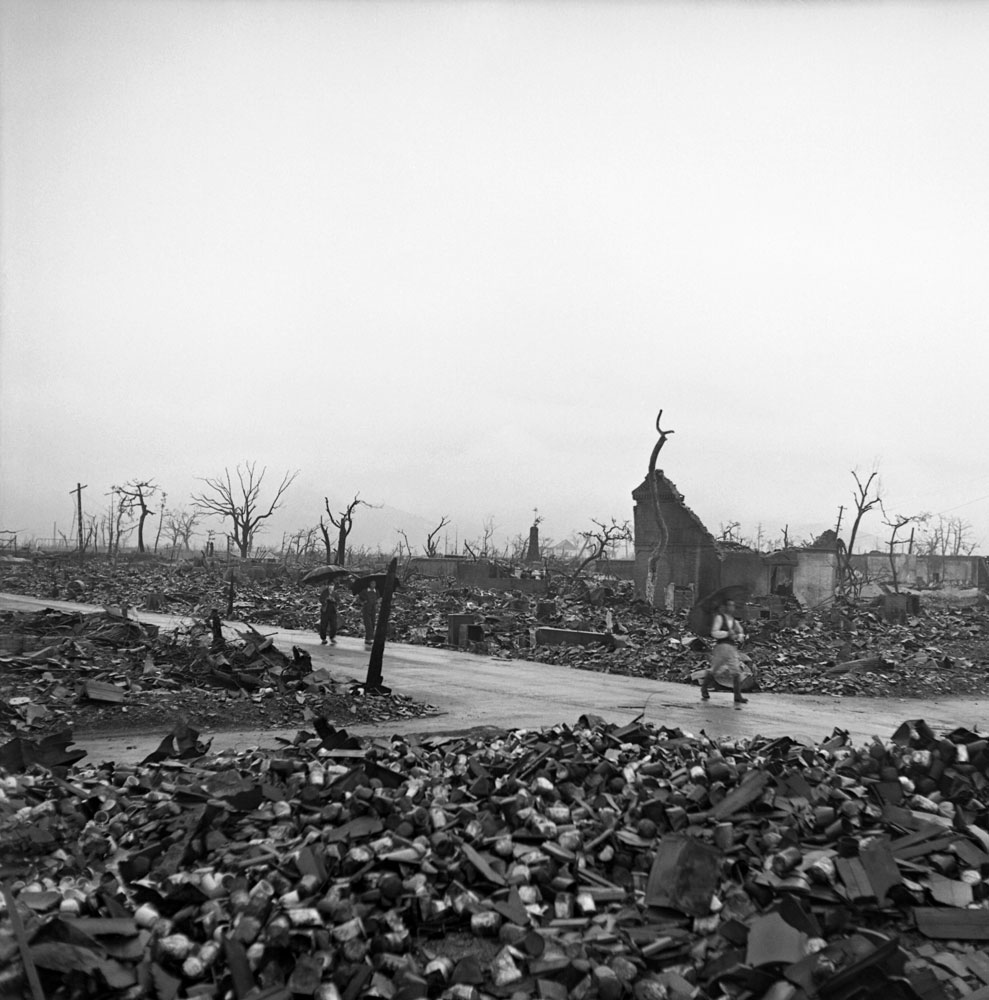
HIROSHIMA TWO MONTHS AFTER THE INITIAL BOMBING, OCTOBER 1945. COURTESY OF LIFE MAGAZINE

The bombing of Hiroshima placed the petrifying potential of the atomic bomb on display for the entire world to see. Three days after the horror in Hiroshima, Nagasaki became World War II’s final victim of nuclear decimation; 60,000 would perish.
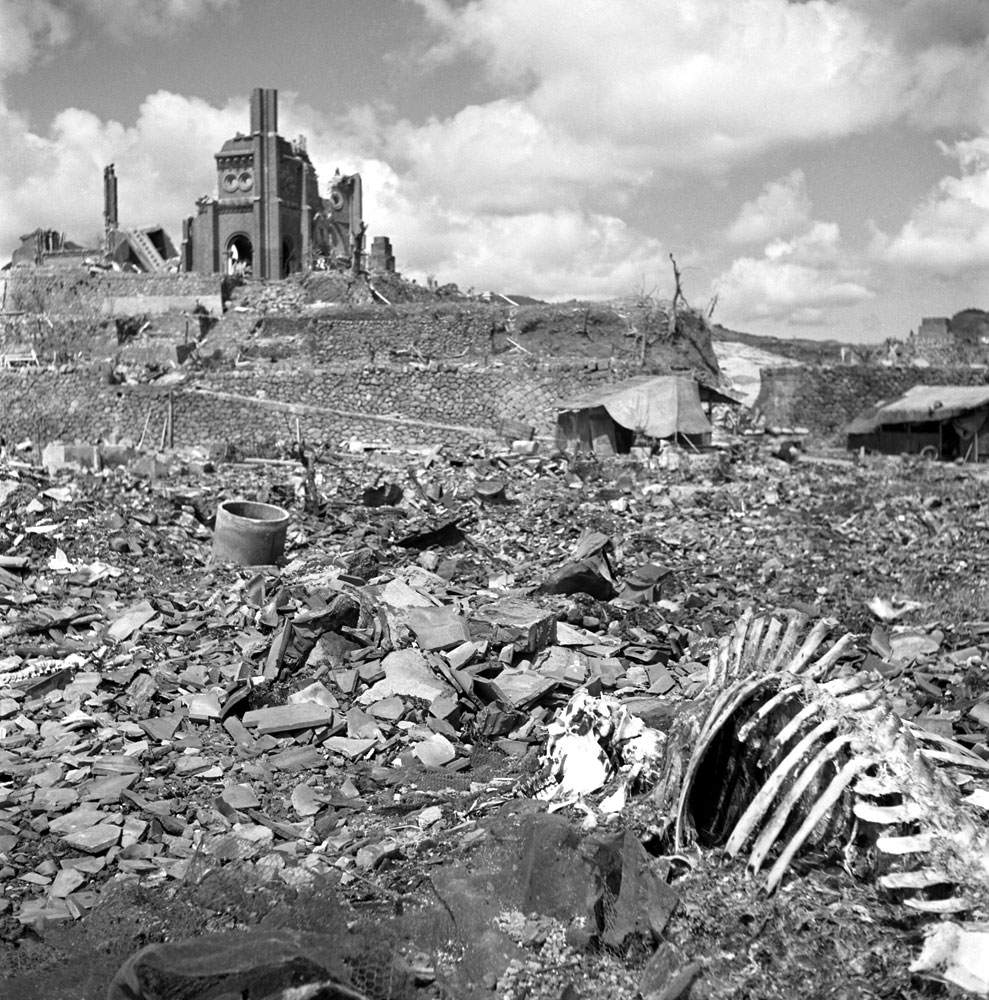
RUINS OF URUKAMI CATHEDRAL IN NAGASAKI, SEPTEMBER 1945. COURTESY OF LIFE MAGAZINE
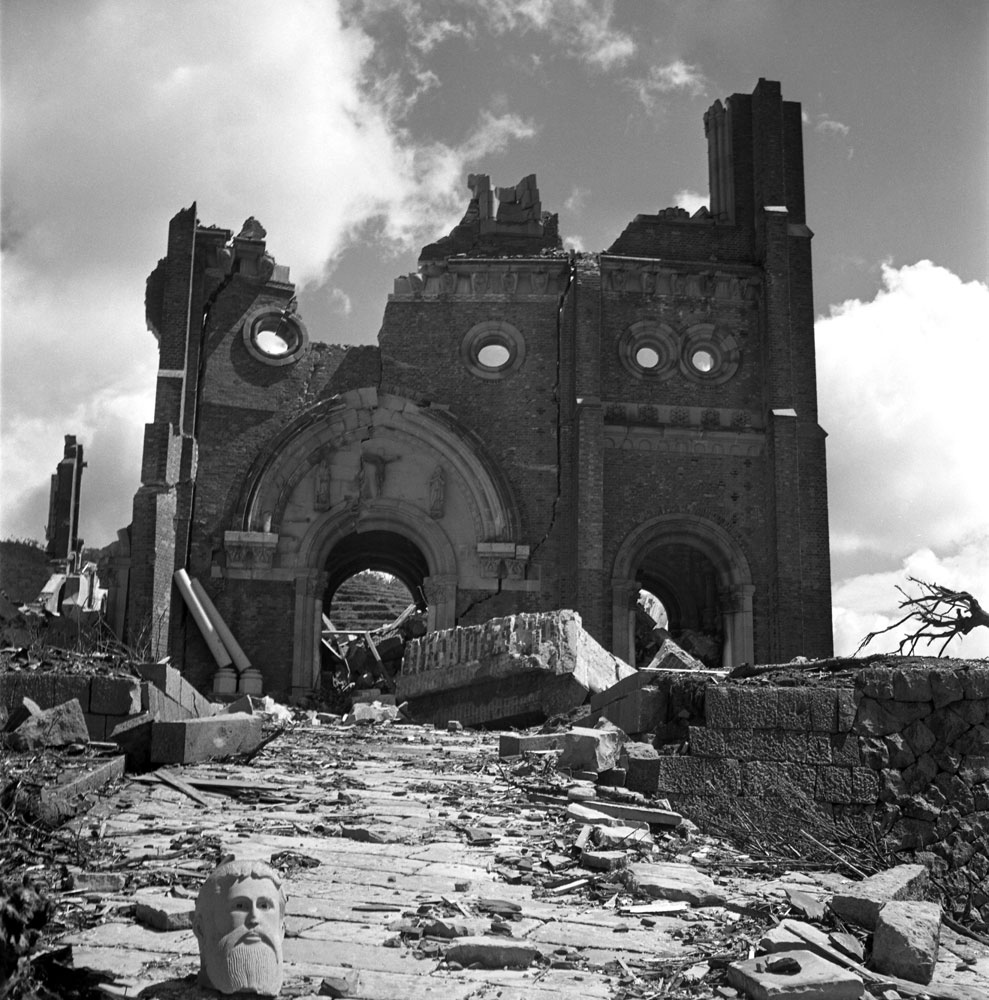
RUINS OF URUKAMI CATHEDRAL IN NAGASAKI, SEPTEMBER 1945. COURTESY OF LIFE MAGAZINE
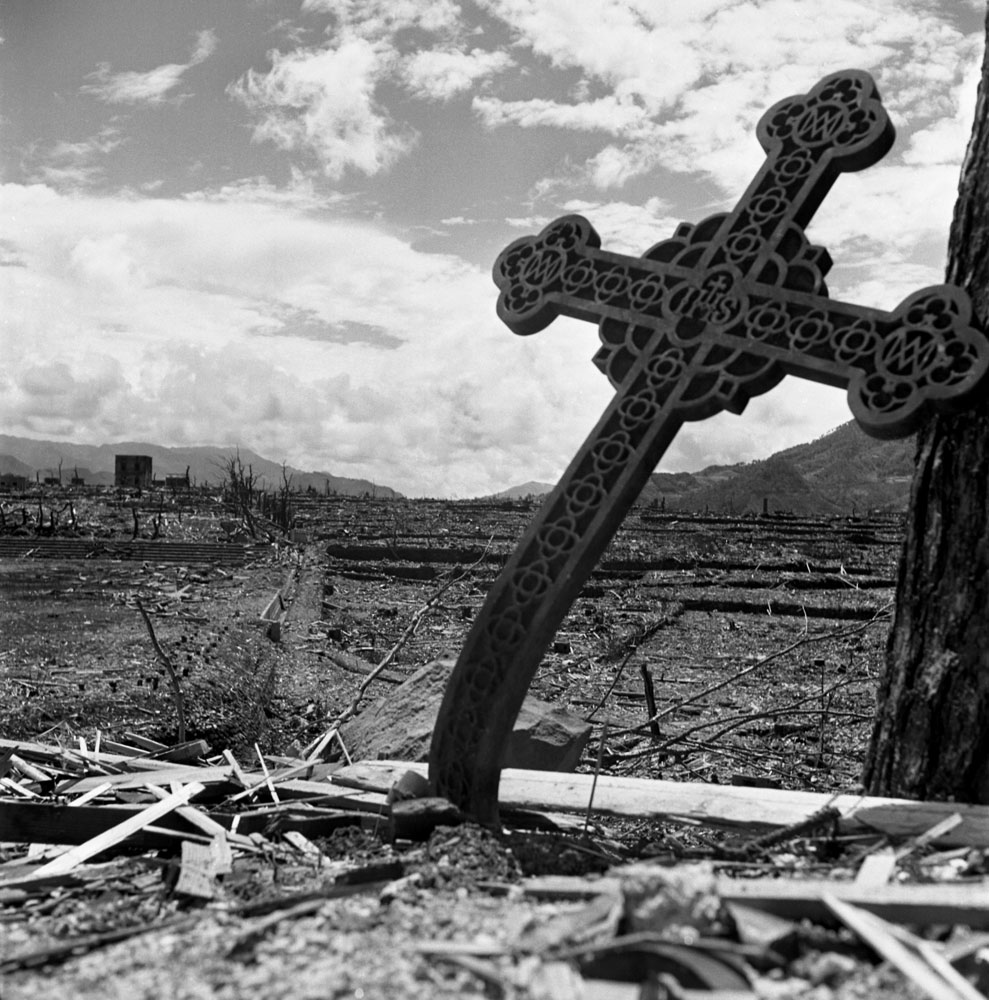
NAGASAKI, SEPTEMBER, 1945. COURTESY OF LIFE MAGAZINE

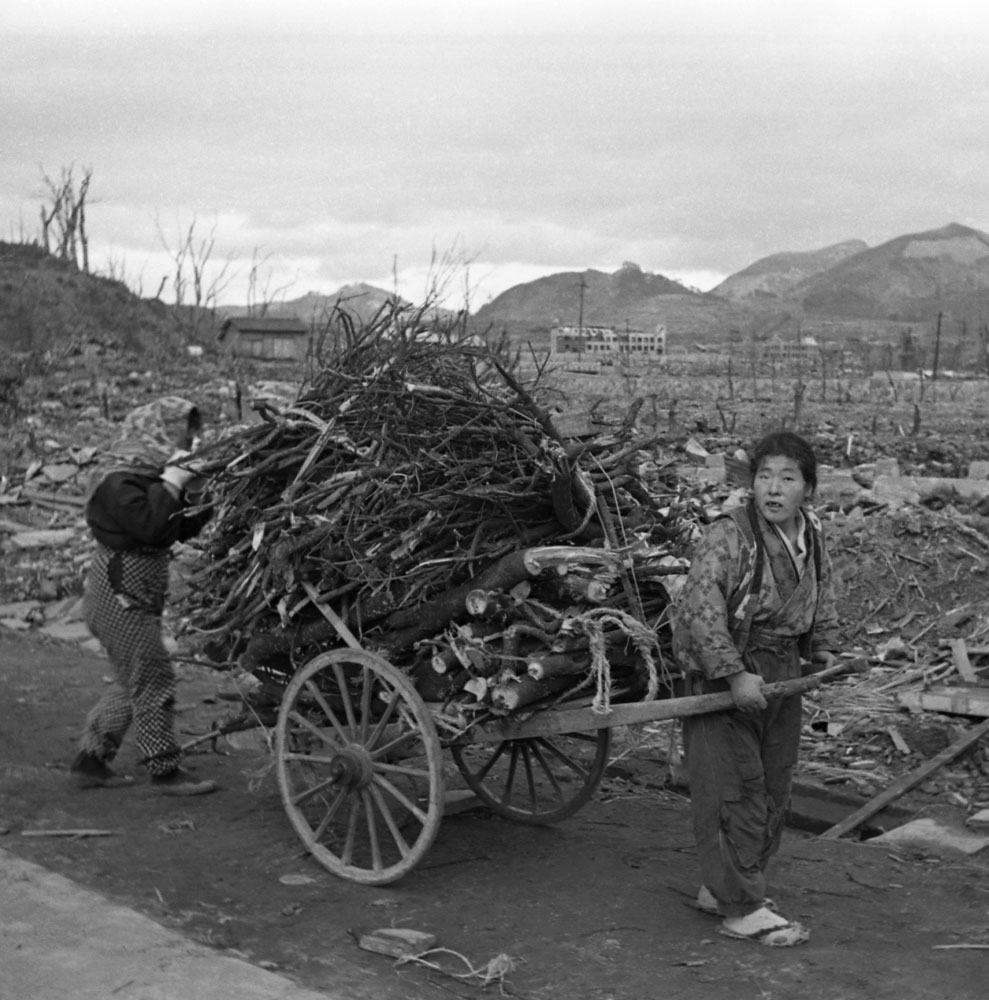
JAPANESE CARRYING WOOD FROM THE REMAINS OF NAGASAKI, 1945. COURTESY OF LIFE MAGAZINE
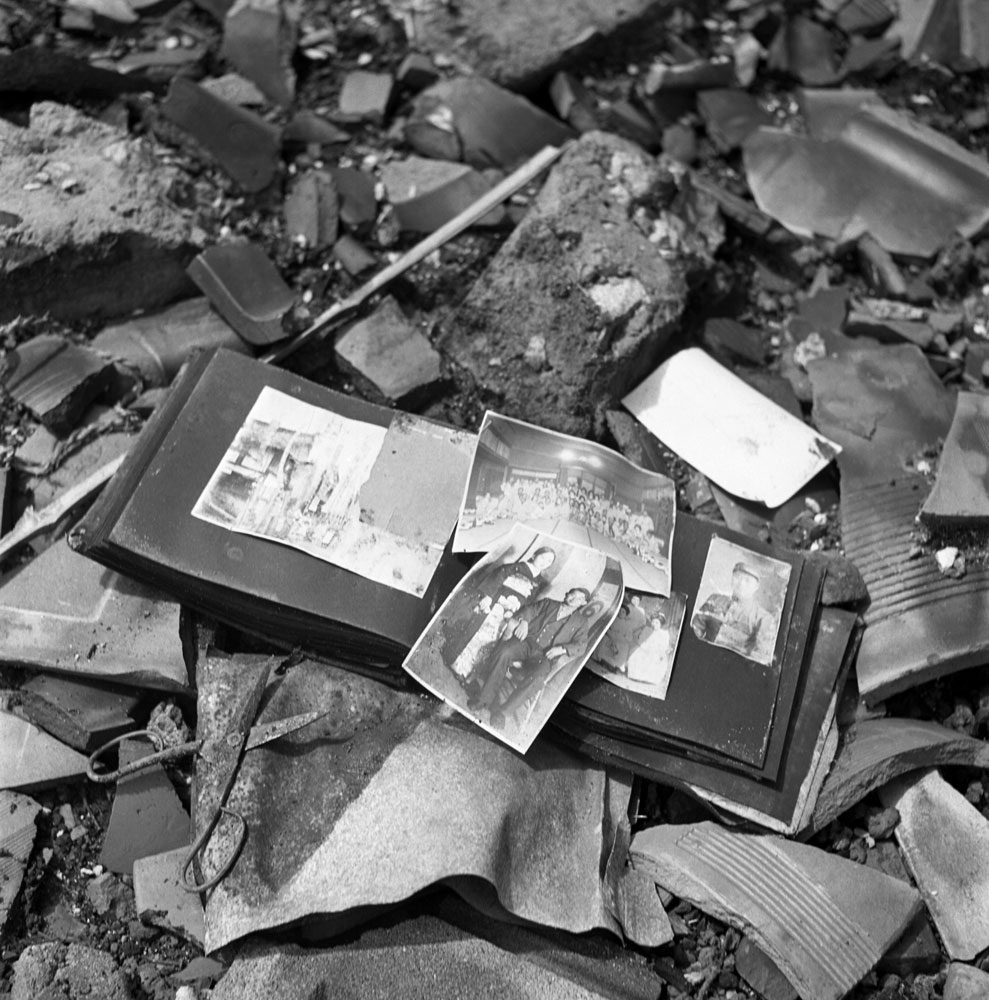
A PHOTO ALBUM FOUND FROM THE RUBBLE OF NAGASAKI, 1945. COURTESY OF LIFE MAGAZINE

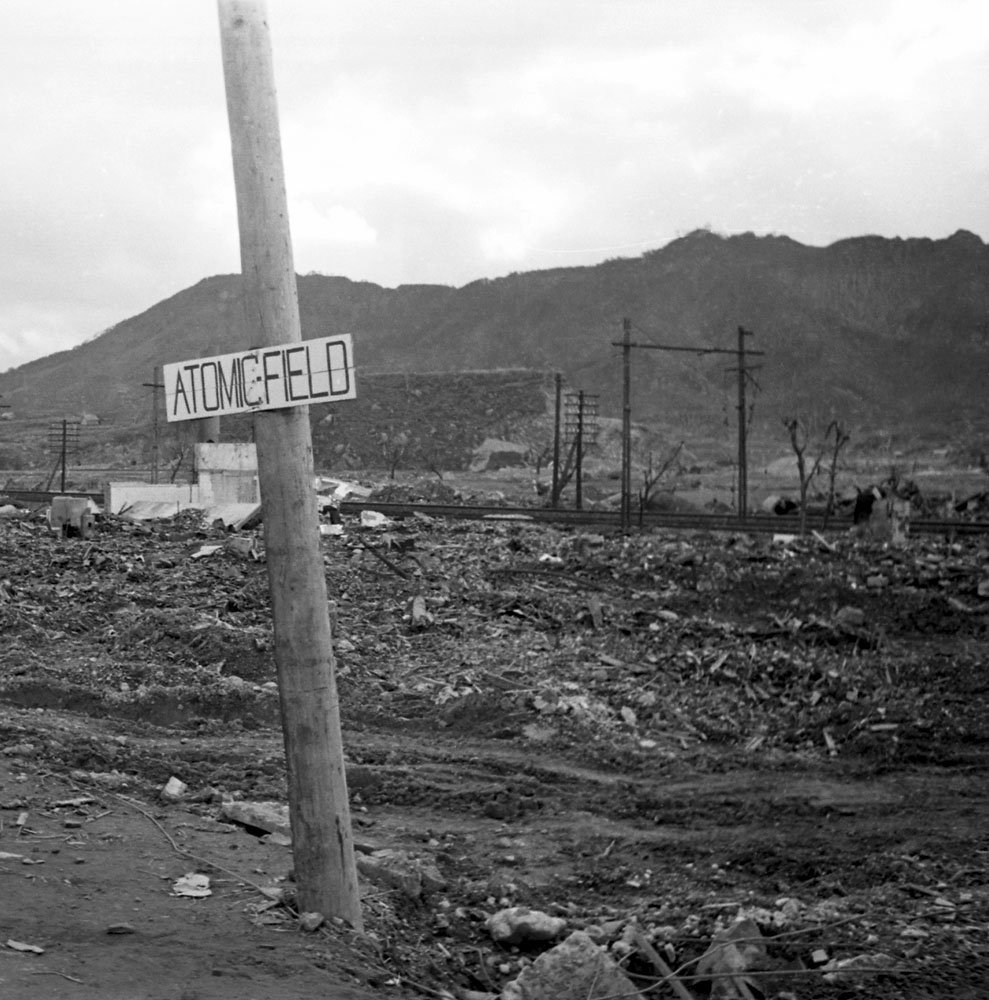
NAGASAKI, 1945. COURTESY OF LIFE MAGAZINE
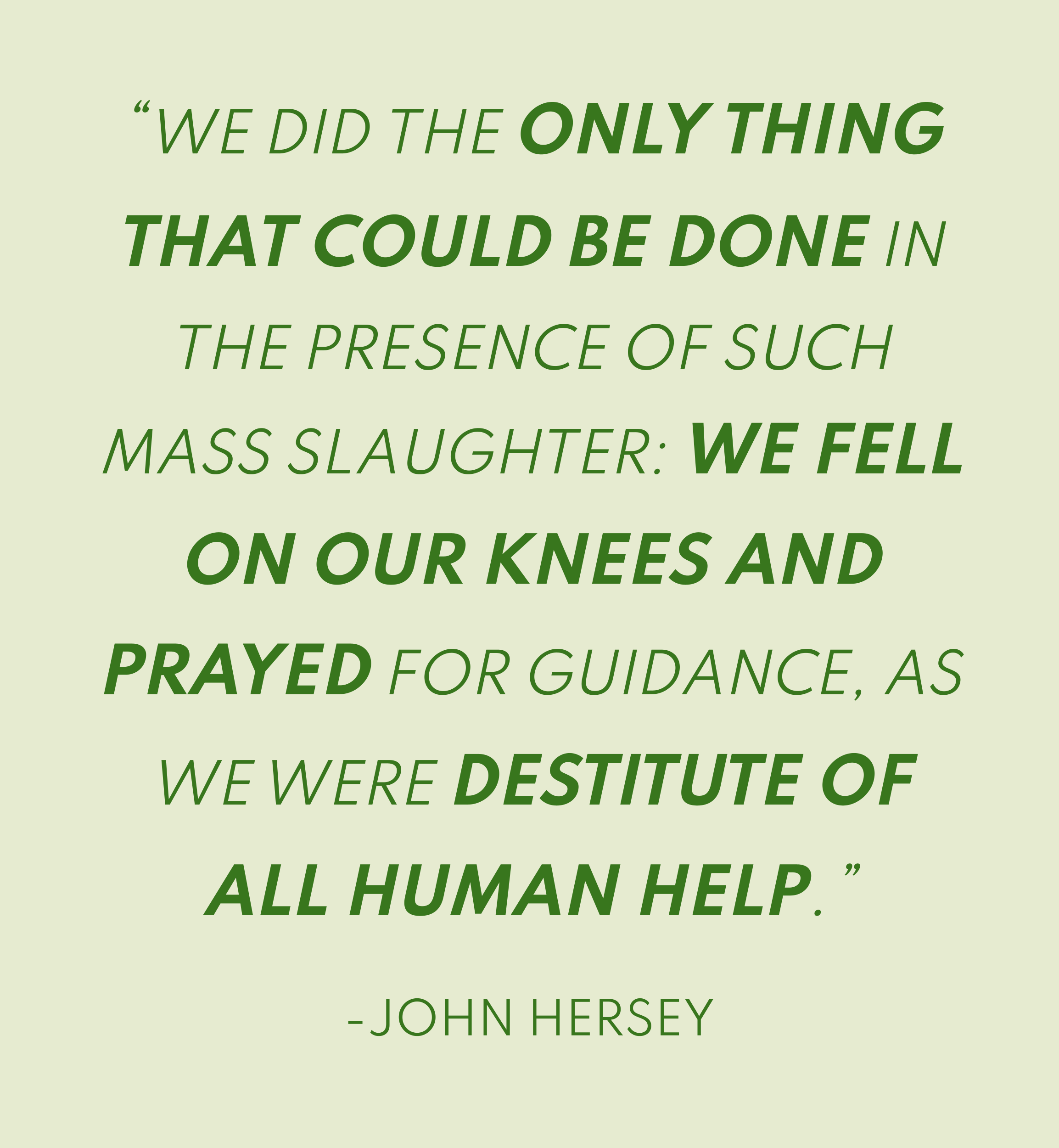

A WORLD IN SHOCK
The atomic bomb's tremendous power forced Japanese surrender, leading to the eventual total collapse of the Axis Powers and Allied victory of World War II.
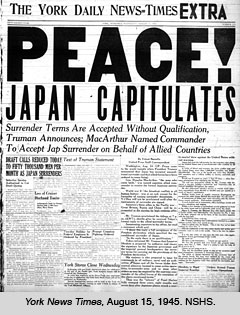
AMERICAN NEWSPAPER ANNOUNCING THE END OF THE END OF THE SECOND WORLD WAR, AUGUST 1945. COURTESY OF THE NEW YORK TIMES
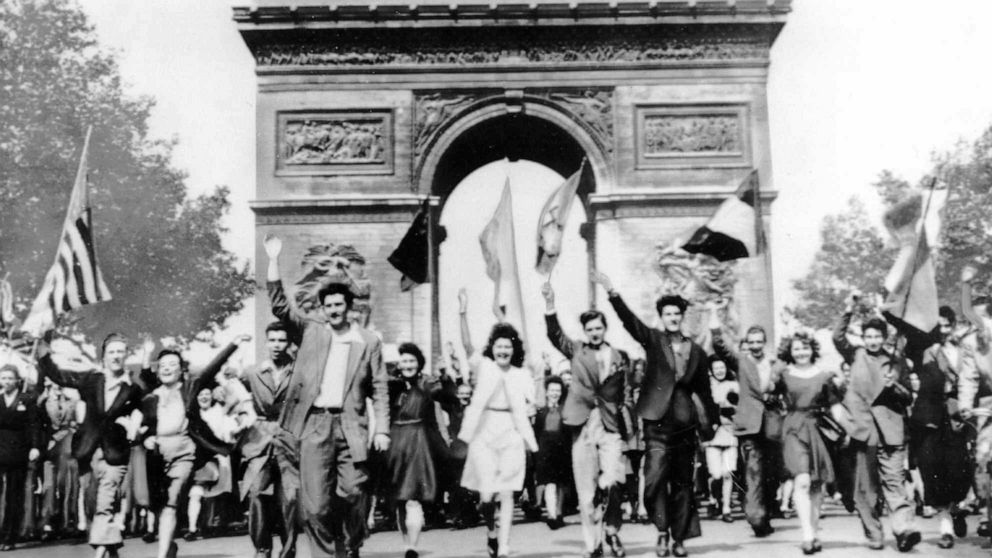
PARADE CELEBRATING THE END OF WORLD WAR II IN PARIS, 1945. COURTESY OF ASSOCIATED PRESS
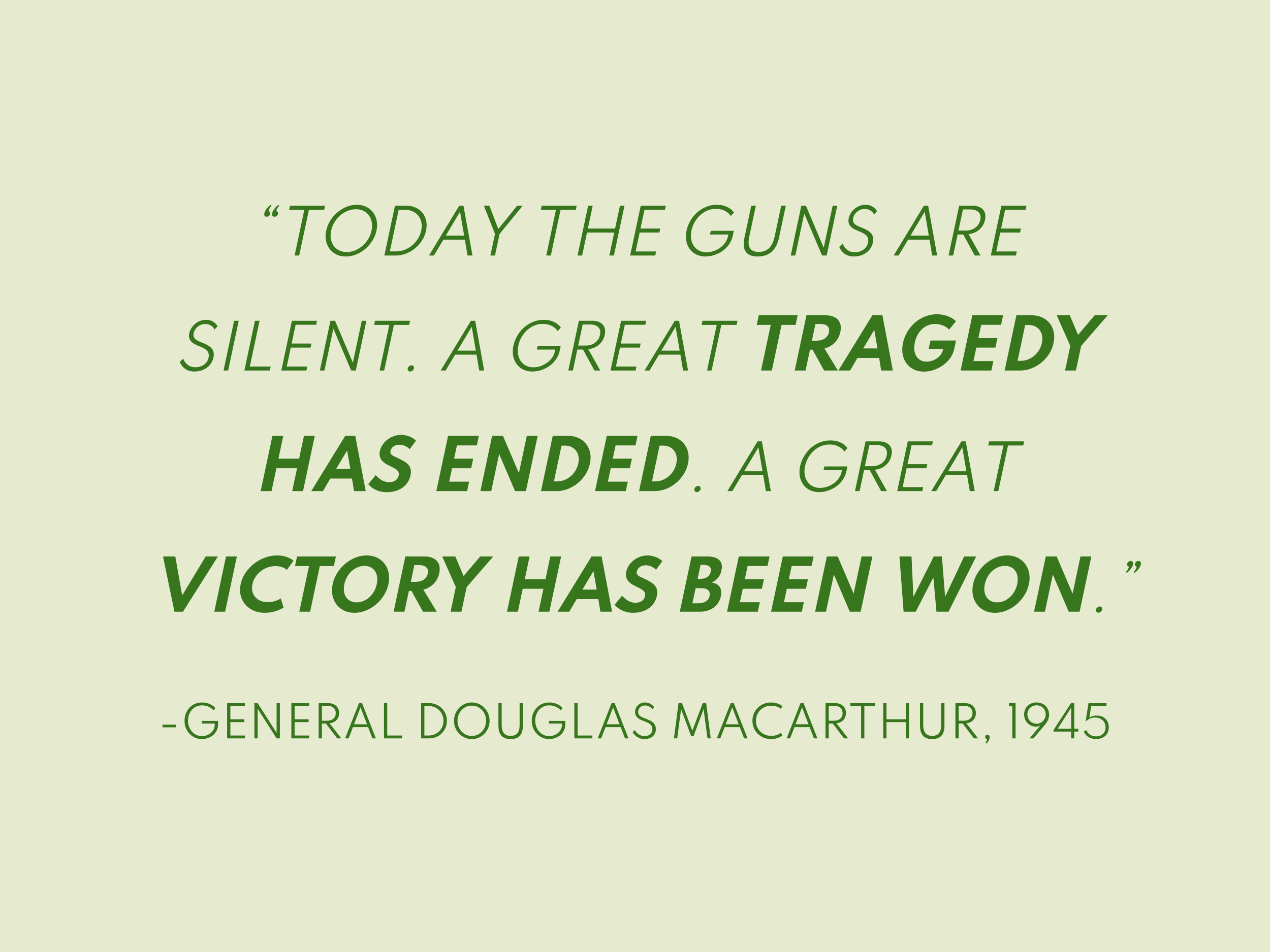

THE WAR HAD ENDED. PEACE HAD BEEN RESTORED. BUT THE ATOMIC BOMB REMAINED AS ITS POTENT CAPABILITY TO DESTROY MODERN CIVILIATION HUNG IN THE AIR, STEADILY FOSTERING TERRORIZING FEAR ACCROSS EVERY NATION OF THE WORLD.

THE RUSSELL-EINSTEIN MANIFESTO
NATIONAL HISTORY DAY 2022: DEBATE AND DIPLOMACY
EVAN McCRACKIN REN GIUSTI, AND JUSTIN YANG